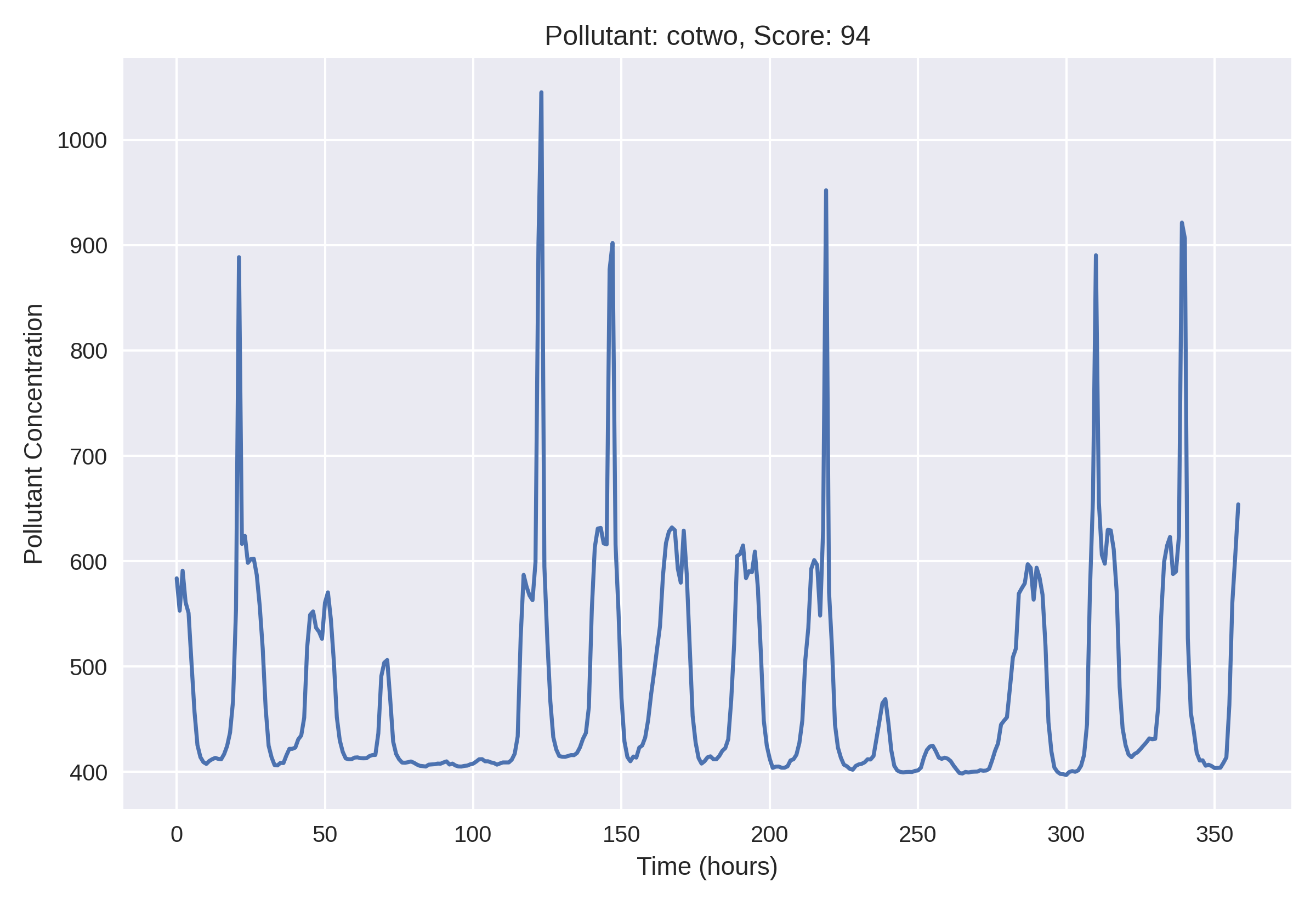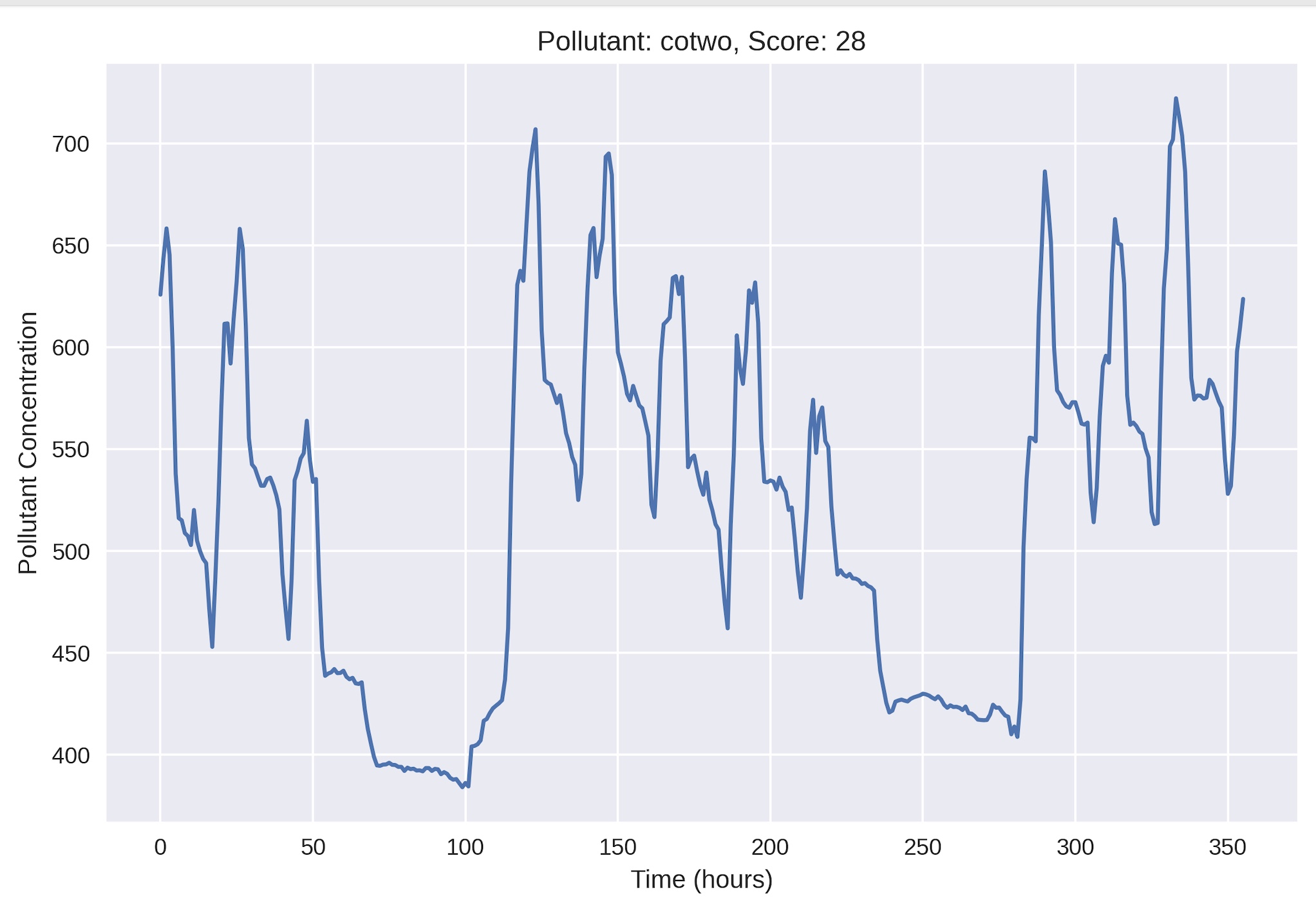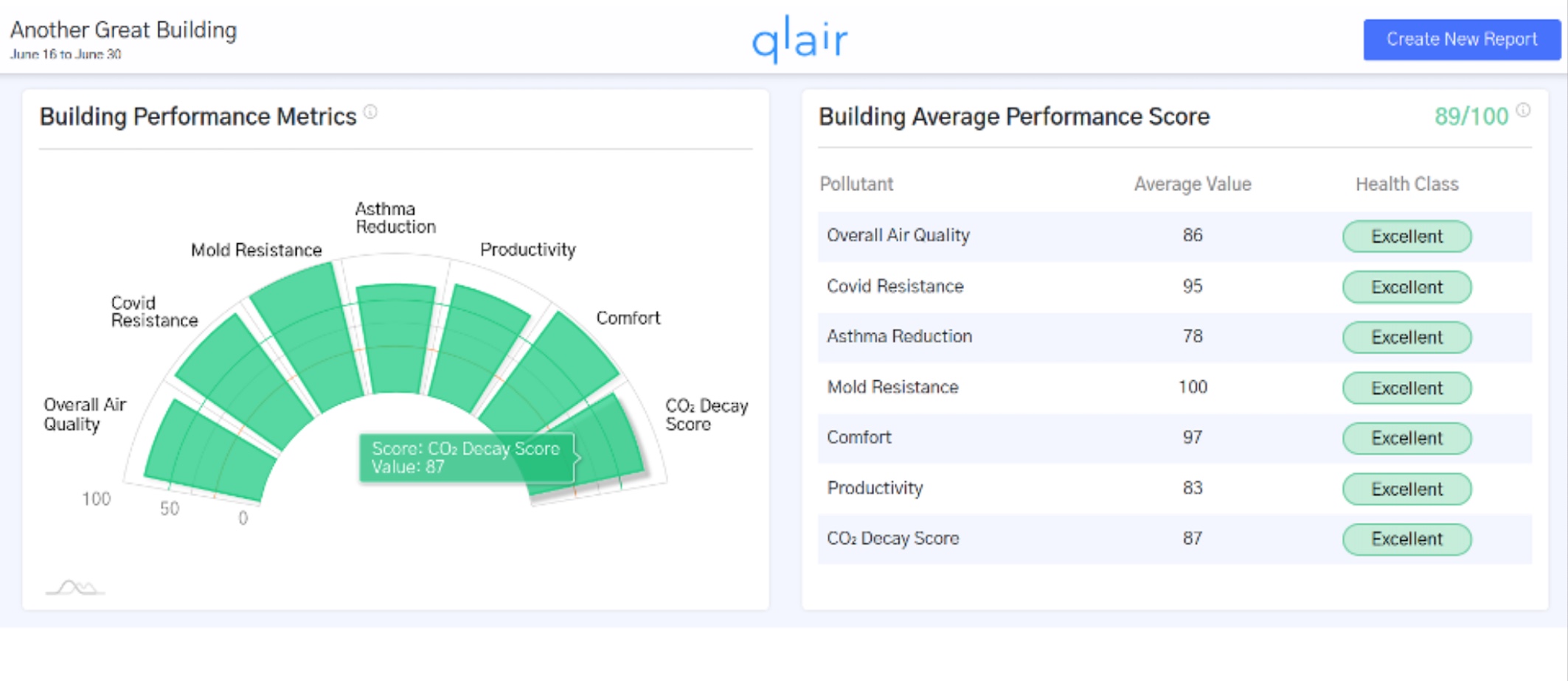Everyday activities influence air quality in surprising ways, which cause short-term spikes in indoor air pollutant concentrations such as carbon dioxide (CO2), organic compounds, and fine dust matter. We often see patterns occur daily as people cook and clean within their living and working spaces. The health effects of these spikes can be minimal if the space is well ventilated. When there is not a significant amount of ventilation to remove these pollutants, people can feel groggy or may start having slight allergic reactions such as sneezing or a runny nose.
How qlair Measures Pollutant Concentration
Continuously measuring the number of air exchanges within an indoor space is a very difficult task. Variables such as doors, windows, variable ventilation rates, and occupants can skew these results. While it may be helpful to know your room is having air exchanged 5 times per hour, it may be more important to understand if this number of exchanges has a positive impact on the pollutant concentrations within a space– especially when there is a spike!

This is where qlair’s pollutant decay models help. We analyze and identify pollutant spikes to determine their rate of decay after they’ve hit their peak. If pollutant levels decrease significantly then we know there is proper ventilation of this space. If pollutant levels sustain or taper, then there is a chance the number of air exchanges occurring are not enough. A high score with these metrics will indicate that pollutant spikes are being properly handled by the building ventilation. A low score indicates that there is some lag between a pollutant concentration spike and when that concentration returns to healthy or normal levels.
Here is an ideal CO2c decay, the concentration drops to healthy levels almost immediately after a spike:

Here is a not ideal score, notice how the CO2 lags after its spikes:

Pollutant Decay Metrics From qlair
HVAC units are often programmed once or twice in their lifetime to run on certain schedules or react to temperature and humidity. This is changing as more people are using demand driven ventilation to create a cost optimized and healthy environment for their building’s occupants. Well programmed demand driven ventilation will be able to quickly reduce pollutant concentrations after events such as cooking, cleaning, or a large group meeting in a conference room. In these cases, pollutant levels should decrease quickly to fresh air levels. This score is appropriate for all types of units whether they run continuously on a schedule, or are demand driven directly to CO2. Our score focuses on the part that matters: what the impact that your air exchange rate has on occupants.
 Contact an IAQ expert today from qlair: https://i-qlair.com/contact/
Contact an IAQ expert today from qlair: https://i-qlair.com/contact/

